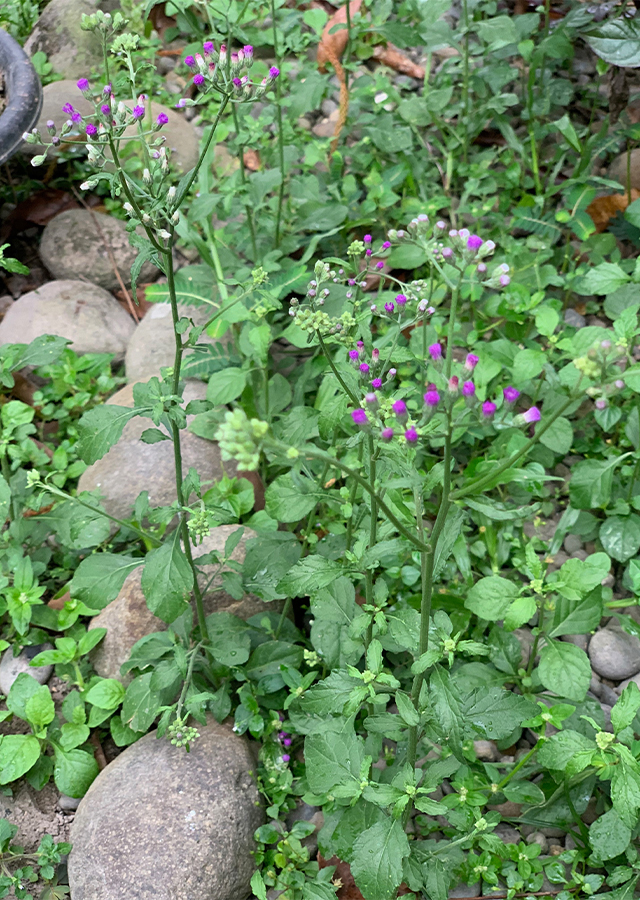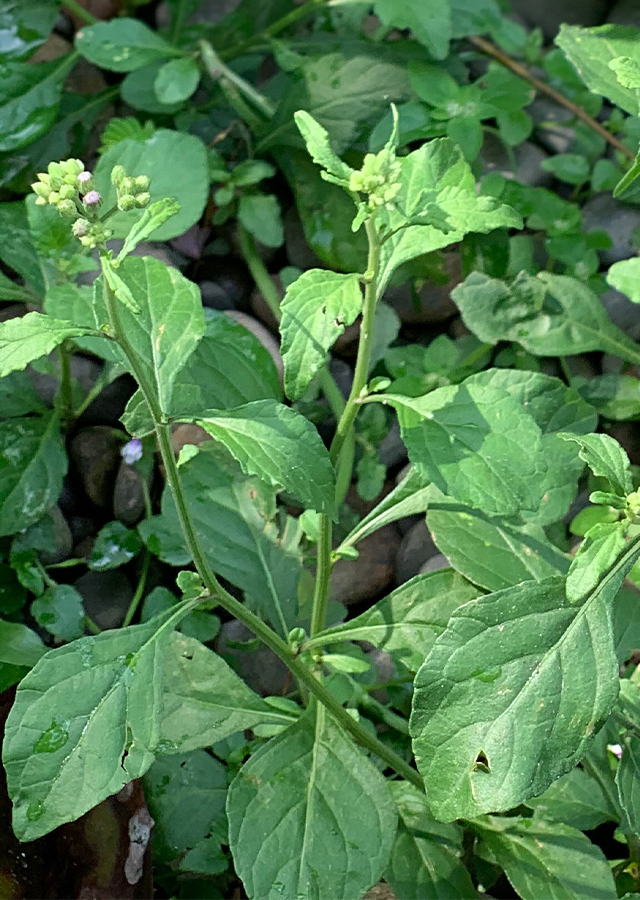Traditional Herbs from Cyanthillium cinereum
ulcer_bite_snake_wound_terpukul_keseleo
- Prepare enough whole plants.
- Wash clean, mash finely, add a little water.
- Stick it on the sick part of the body.
dysentri_hepatitis_kejang_stomach_kejang_stomach_insomnia
- Prepare 10-15 grams of the plant dry, wash until clean.
- Boil with 4 glasses of water until it boils and 2 glasses of water remain, strain.
- Drink 2 times a day, 1 glass each.\u00a0
What is Cyanthillium cinereum Looks like??



Parts of Cyanthillium cinereum that could be used
- Leaves", "Seeds", "Flowers", "Roots", "All Parts of the Plant
Cyanthillium cinereum Distribution
Sirangak is widespread in Africa, Arabia, Asia, Papua New Guinea and Australia. In Indonesia, Sirangak leaves have long been used by the Minangkabau people as a traditional medicine to heal wounds, while in Java the young shoots can be consumed as a cooked vegetable.Agroecology of Cyanthillium cinereum
Grows in the lowlands up to an altitude of 800 m above sea level. This plant likes direct sunlight and can grow in various types of soil. Generally found on roadsides, fields as weeds.�
Morphology of Cyanthillium cinereum
- Stems are round, green, heavily branched, finely hairy.
- Leaves are green, oval in shape, serrated edges,\u00a0short-stemmed,\u00a0petiole 1.5 cm long.
- Flowers\u00a0are tuberous and colored purplish.
- Fruit is hard, 4-5-sided, brown, some fruit hairs are short and attached, some are long and fall out.\u00a0
Cultivation of Cyanthillium cinereum
- Generative propagation (seeds).
- Seeds are carried by the wind and grow wildly into weeds.\u00a0
Cyanthillium cinereum, more details :
Chemical Content of Cyanthillium cinereumSesquiterpenes (vernocinolide A, β-amyrin, lupeol), sterols (β-sitosterol, stigmasterol, alpha spinasterol), phenols, terpenoids, quinones, steroids, tannins, alkaloids, saponins, glycosides, flavonoids, phlotanins.�
Benefits of Cyanthillium cinereum
Treats wounds, asthma, insomnia, hepatitis, cancer, cholera, coughs, diarrhea, dysentery, impotence, skin diseases, leprosy, arthritis, rheumatism, antidote to scorpion and poisonous snake stings, analgesic, antipyretic, anti-inflammatory.
Simplisia of Cyanthillium cinereum
Information not yet available.
Another Facts for Cyanthillium cinereum :
Synonym of Cyanthillium cinereumBlumea chinensis� (L.) DC., Blumea esquirolii� H.Lév. & Vaniot, Cacalia cinerea (L.) Kuntze
Habitus of Cyanthillium cinereum
Herb. Upright annual herb, reaching 15-80 cm high
Habitat of Cyanthillium cinereum
- Forest", "Coast", "Roadside", "Grassland
No comments:
Post a Comment